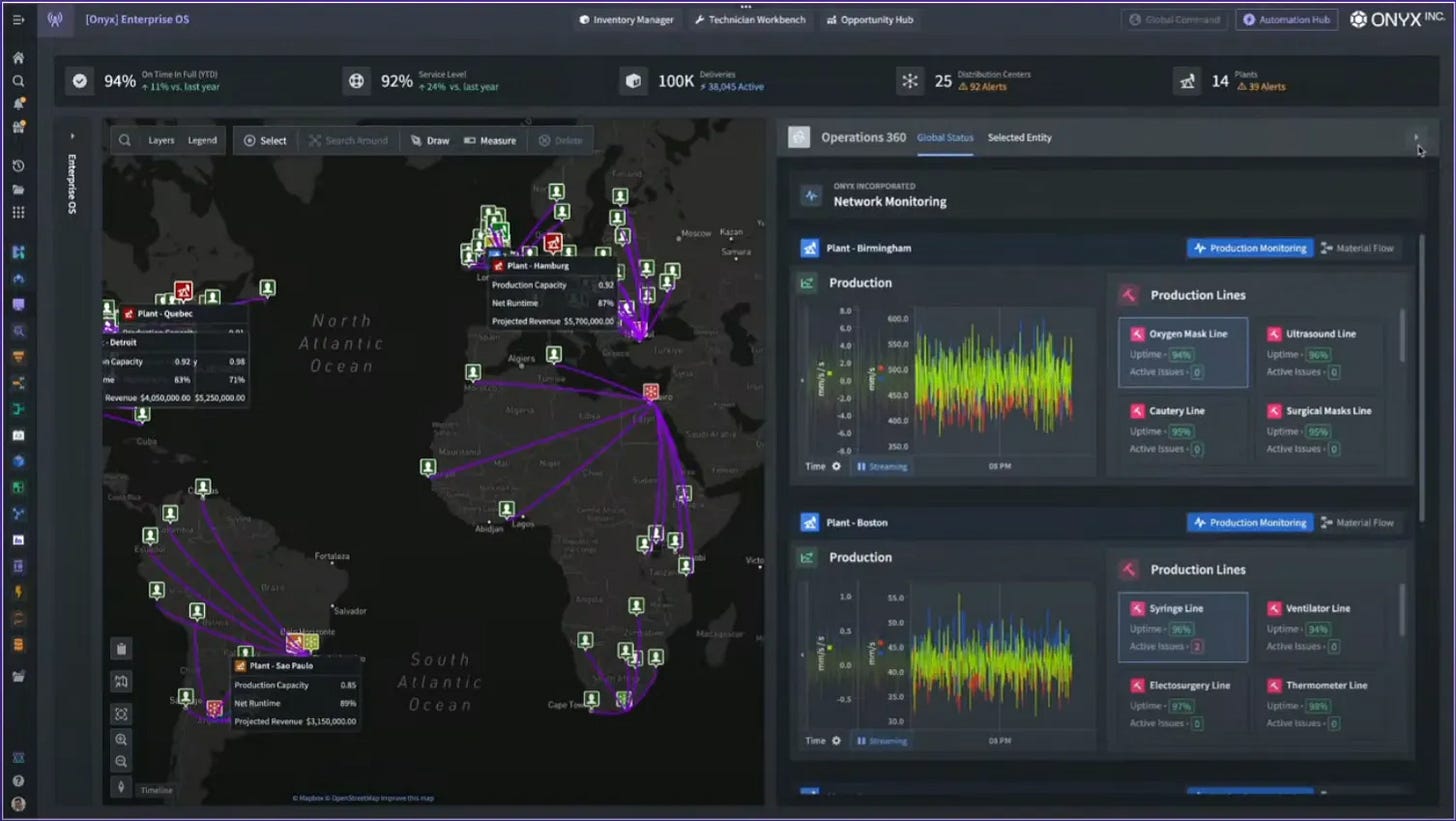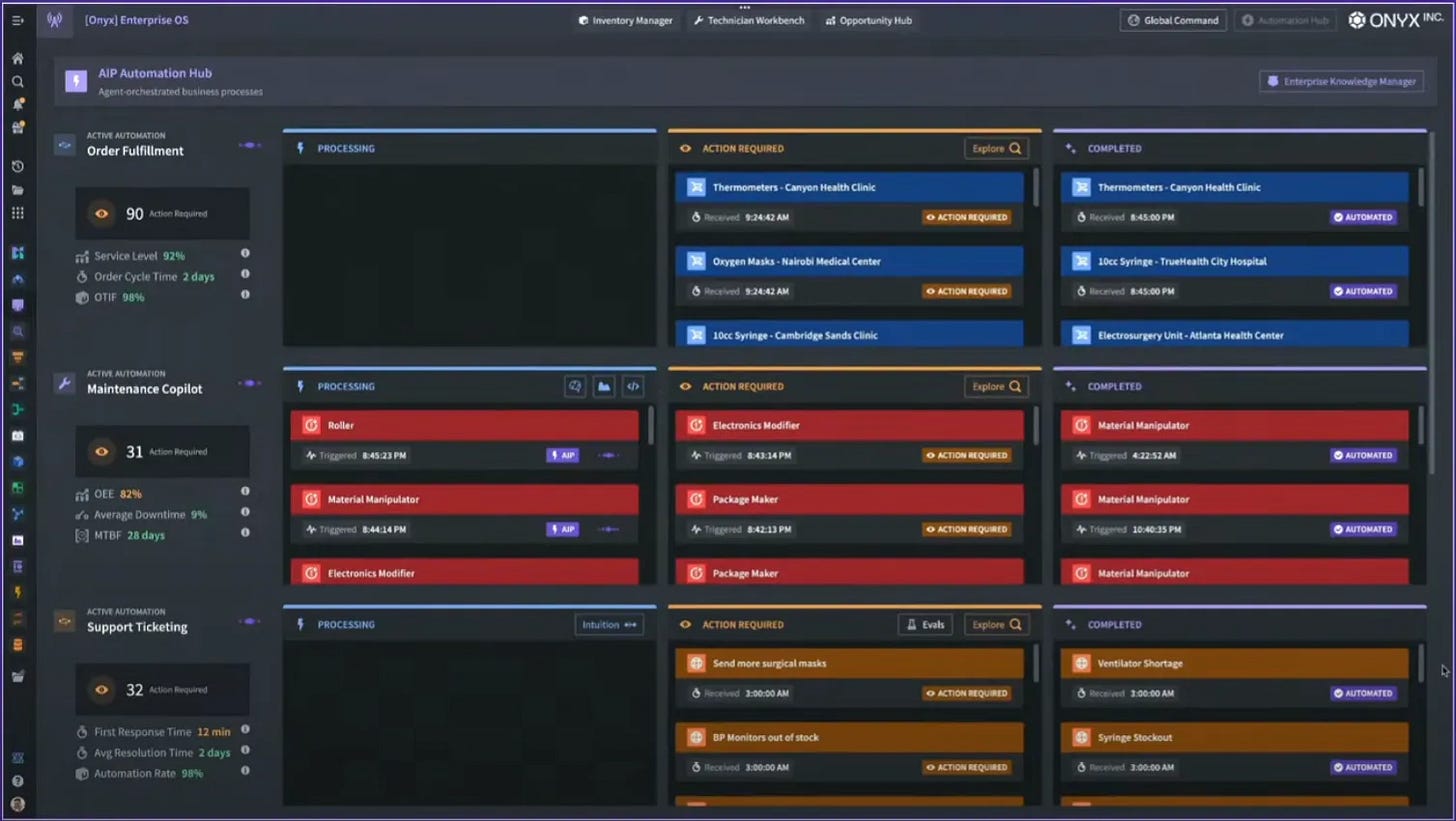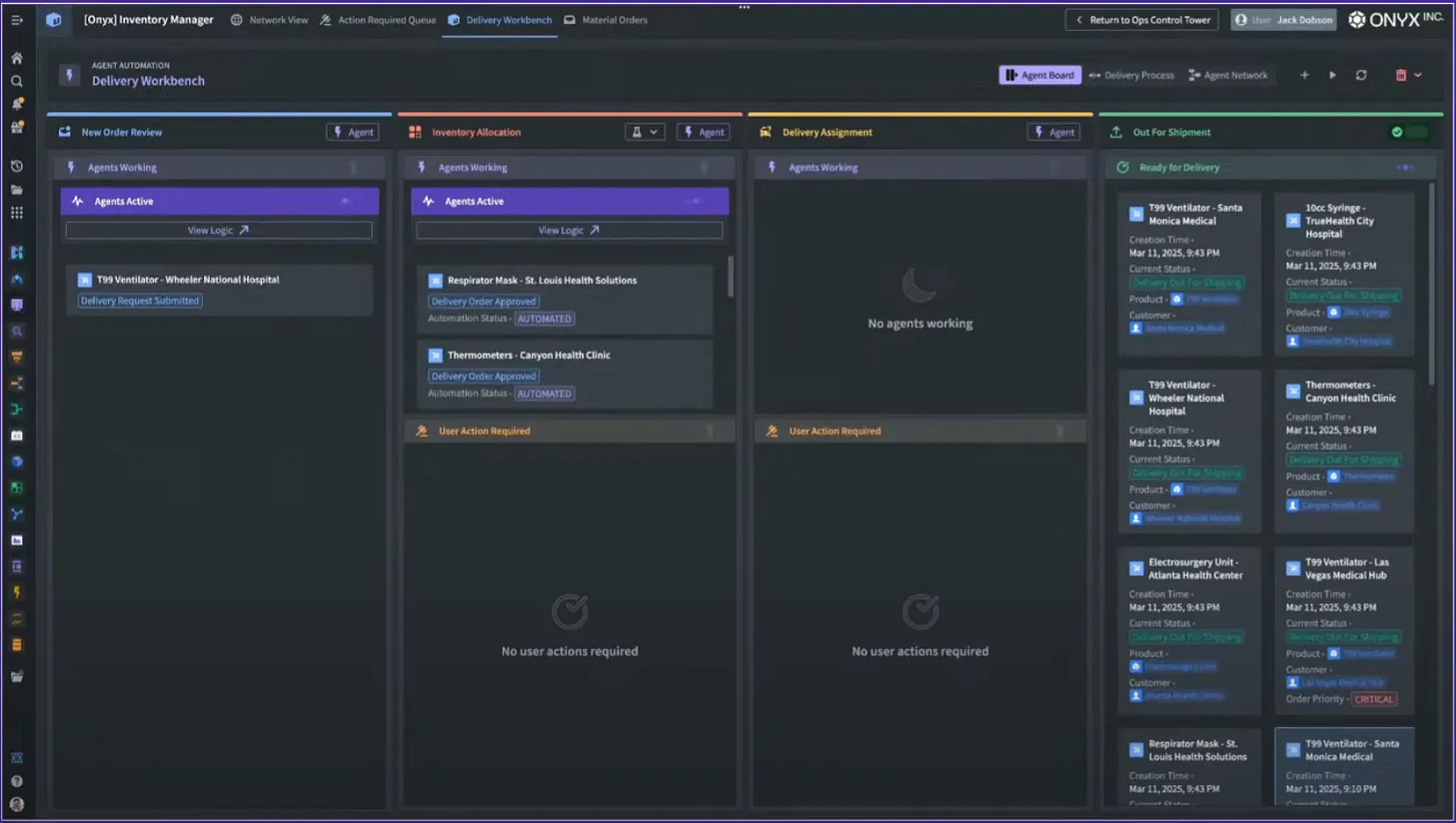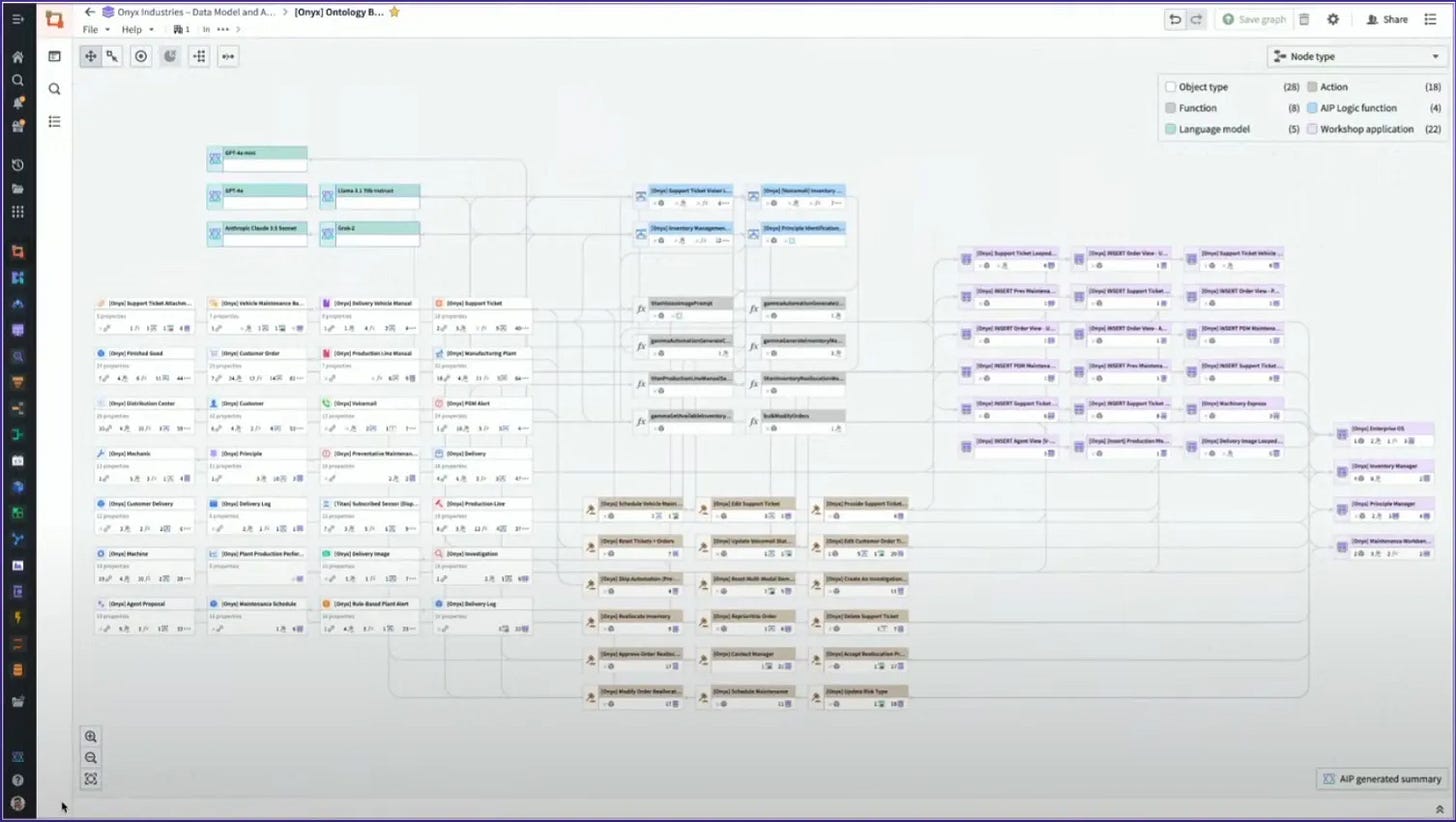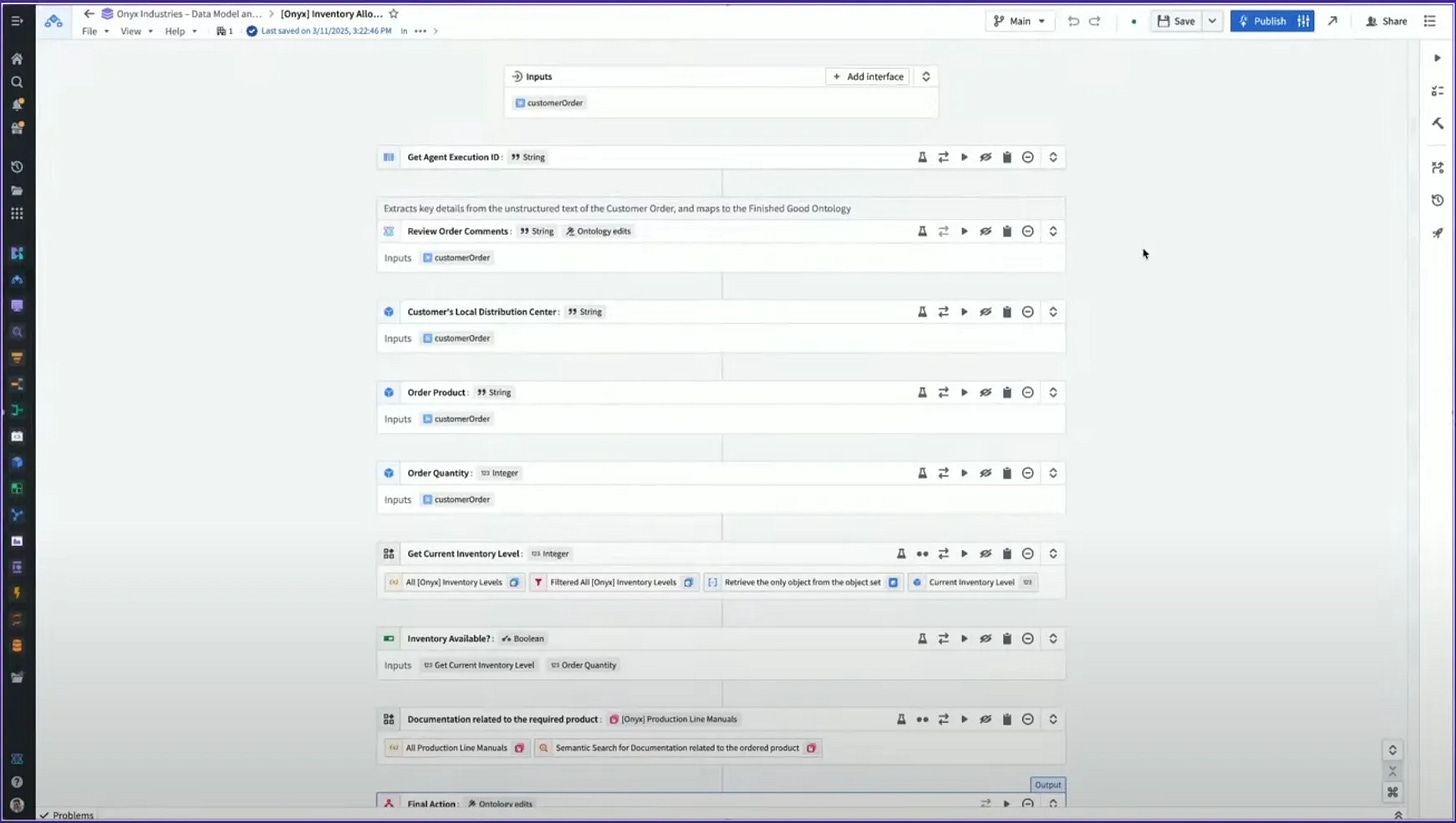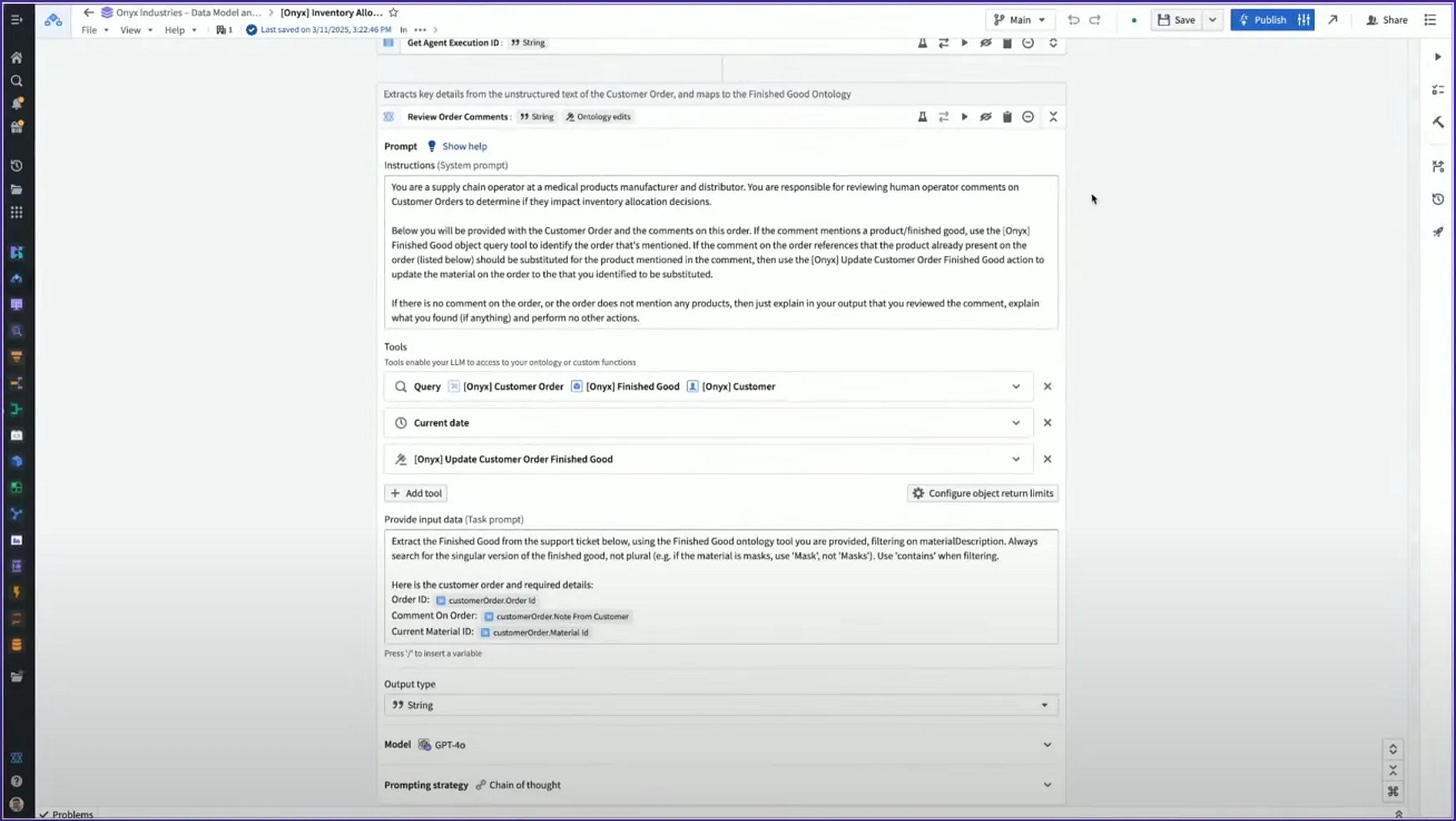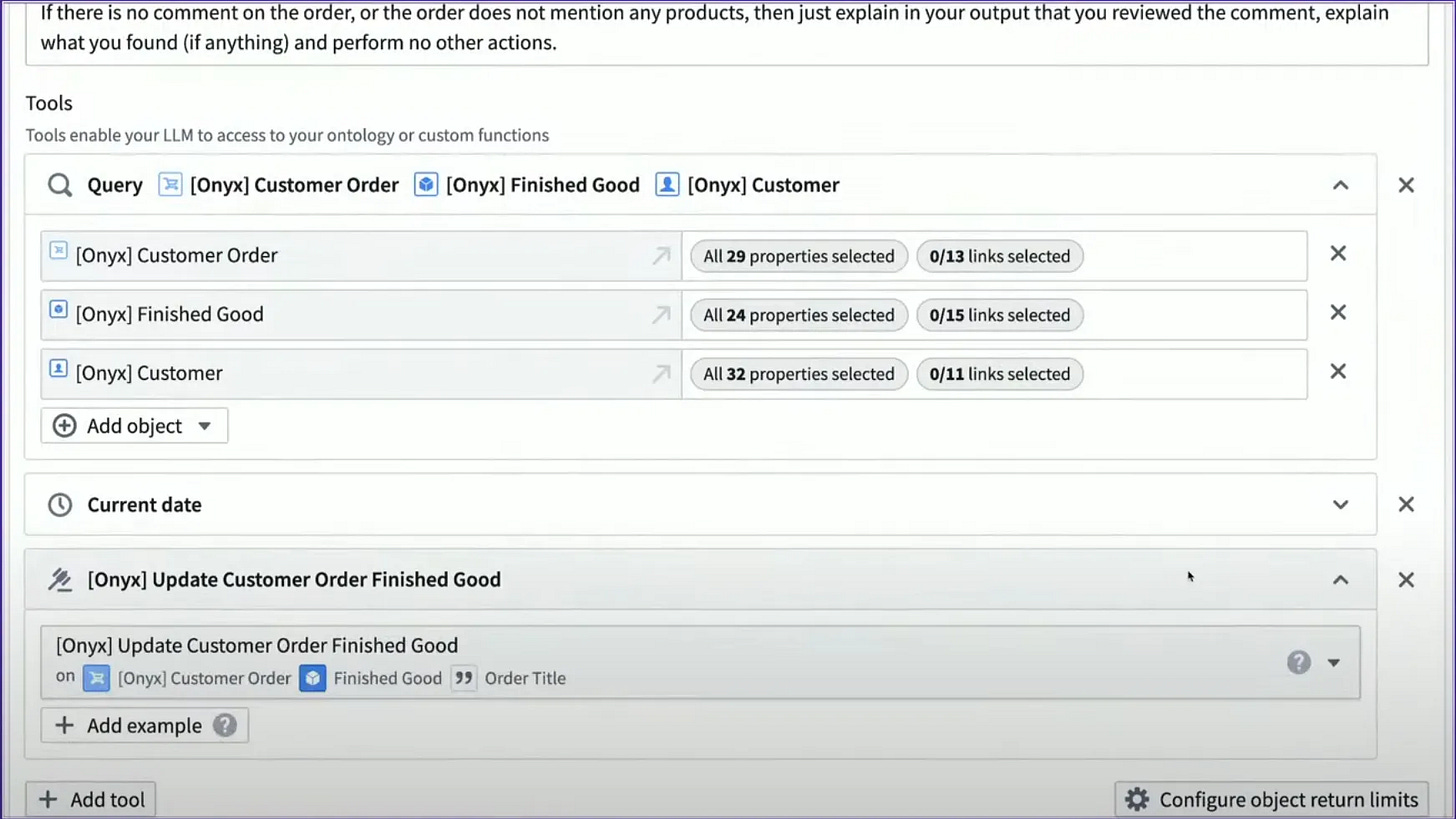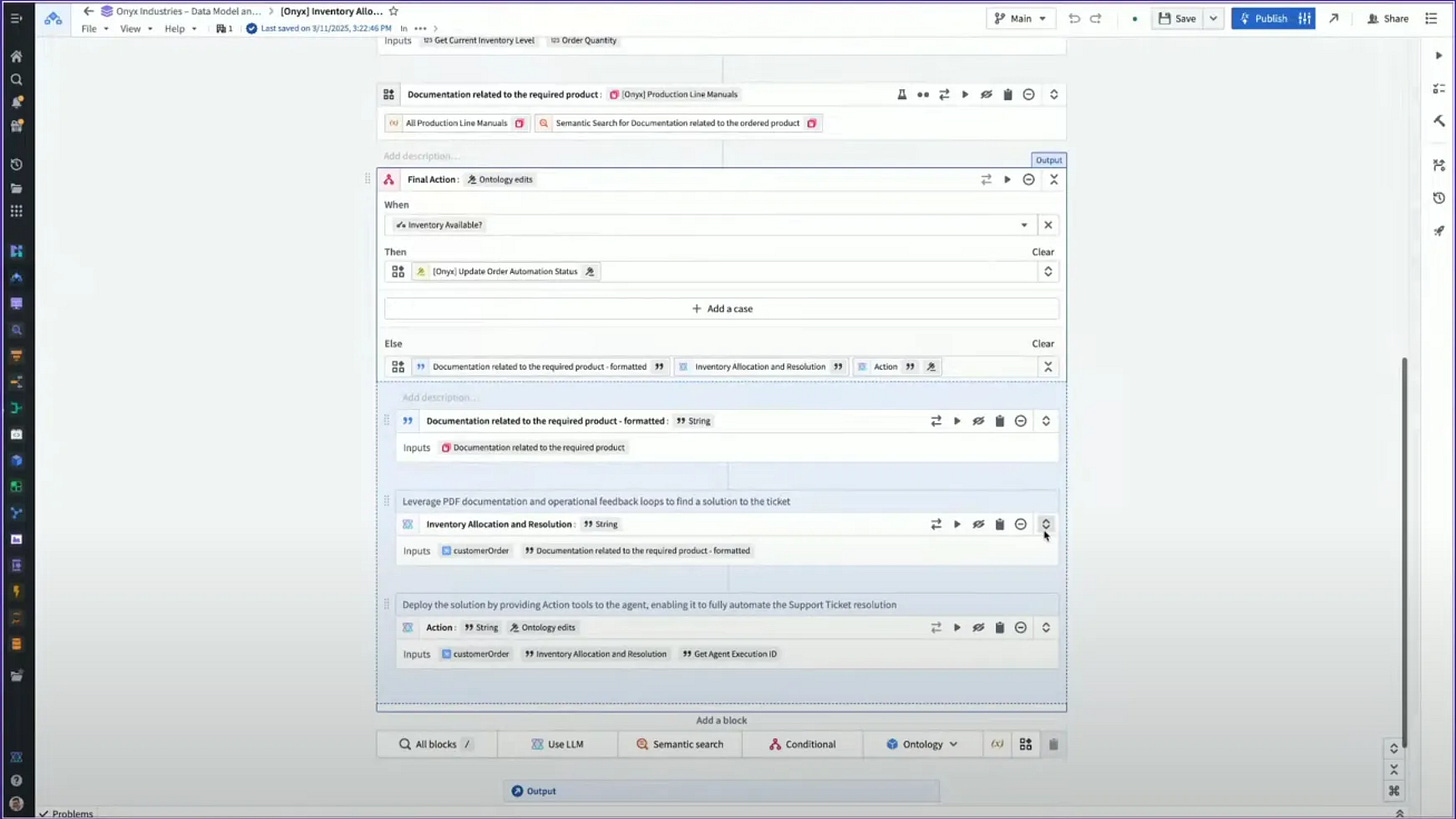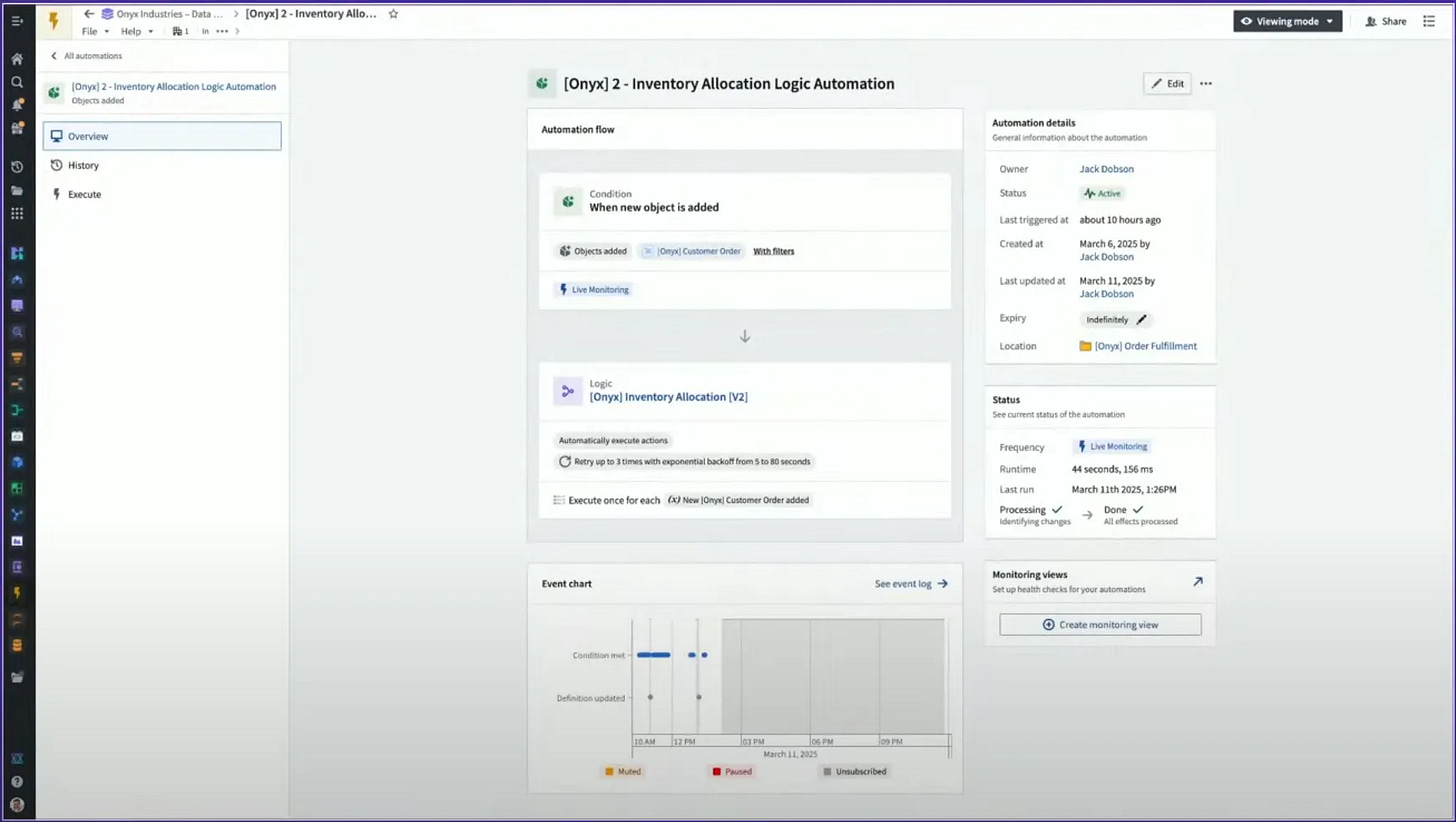AI agents and ontologies create a new operational paradigm (Part 3: A Palantir Case Study)
Pre-Show | AIPCon 6
AIPCon6 showcased how Palantir's AIP, an AI-powered decision-making system, is creating transformational change and overwhelming efficiencies in real-world industries. In this article, we'll review the pre-show from AIPCon6, where you can see first-hand how complex data can be integrated, AI agents can be leveraged to solve problems in real-time, and human-AI teaming can redefine operating models. In particular, examples of making predictions based on billions of data points, reducing costs through automated decision-making, and responding agilely to market changes will provide concrete direction and inspiration for any organization looking to adopt AI.
The full article is available at this link, as it was too long to include in this email!
Interested in cooperation with Morph Systems? Contact us at mingyupark@morphsys.ai
Onyx Incorporated
Onyx Incorporated is a fictional medical product manufacturing and distribution company set up to demonstrate how Palantir's technology can be applied. Onyx runs all of its real-time decision-making operations on top of Palantir, which serves as the foundation for the business's core mission to
Continuously delivering world-class products to people with zero margin for error, which requires integrating a variety of disparate data sets.
The challenge of scale in a large industry. They're getting great results by leveraging their accumulated data to build Palantir-based applications and integrating large-scale language models (LLMs) into their workflows.
These are the same missions that the Palantir customers panelists in the video are addressing and how they are supporting them.
AI agent-powered operations
All of Onyx's core functions are now agent-driven. Core workflows like order fulfillment and maintenance were once limited to human operators, but the concept of human-AI teaming now drives these core flows.
In Onyx's automated fulfillment demonstration, agents process new customer orders in real time during the fulfillment process. In the video, you can see orders being fulfilled by agents from left to right. This is not just a chatbot or point solution, but a chain of agents that automate core business functions. We are redefining operations around this agent framework.
In the inventory manager screen, the agents work autonomously and then take over from human operators in decision-making areas that require specific input. This allows operators to apply their expertise, and because it's built on an ontology, every component and decision is mapped to an ontology and becomes a configurable asset.
Automation of these workflows would not be possible without ontologies. The screen above shows the Data Lineage screen, which represents the ontologies used to execute workflows in Onyx.
Light blue block (top left): AI model
white block (bottom left): Ontology objects - schemas that hold the actual data
Blue block (top center): AIP Logic blocks
Gray block (top center): Ontology Functions - things that are functionalized for reuse within the Foundry
Brown block (bottom center): Ontology Actions - used to create/modify/delete ontology objects
Purple block (right): Workshop Modules - modules that make up the front end of the application
AIP Logic block
This shows one of the AIP Logic blocks performed by the agent in the demo, the inventory allocation logic.
You can see that the AIP Logic is made up of several blocked functions. You can see that LLM is used in the second of these blocks, Review Order Comments.
If we look inside the LLM block, we can see that it is responsible for reviewing human operator comments on customer orders to see if they affect inventory allocation decisions.
We have the flexibility to import existing ontology objects in this process, and we can also use an ontology action (update customer order finished good) to update existing ontology objects.
If we look at the final block of AIP Logic, 'final action', we can see that one of the previous blocks, 'inventory available', is attempting to modify the inventory order ontology through an ontology action, or assign inventory through another LLM block.
AIP Logic like this can also be automated as demonstrated through the Automation application.
The pre-show at AIPCon6 was more than just a technology demonstration, it was a realistic blueprint for the next generation of operating models that AI and humans are creating together. The core value of Palantir AIP was made clear through the fictional example of Onyx Incorporated. The process of integrating complex data, accelerating decision-making through agent-based automation, and building reusable operational assets around ontologies points the way to real-world, industry-wide change.


